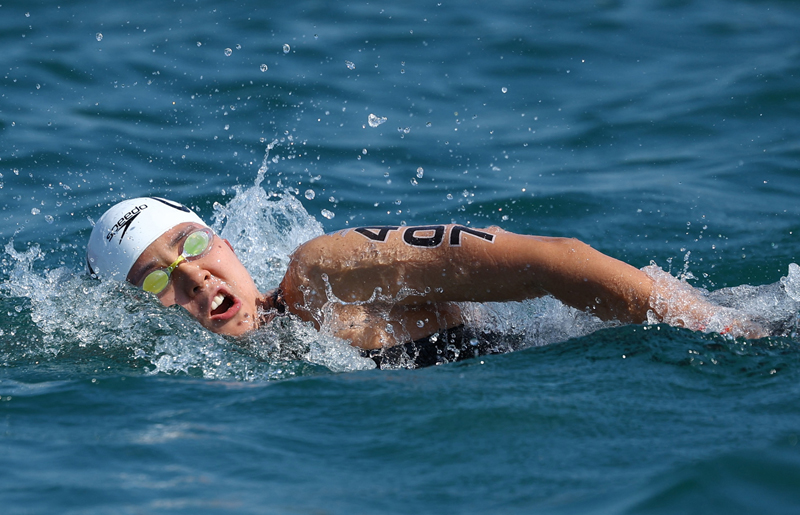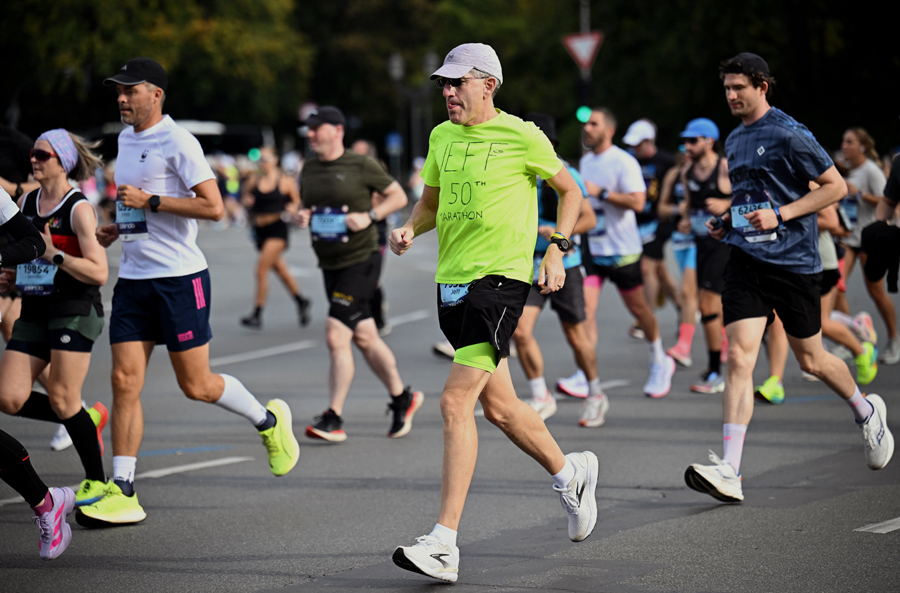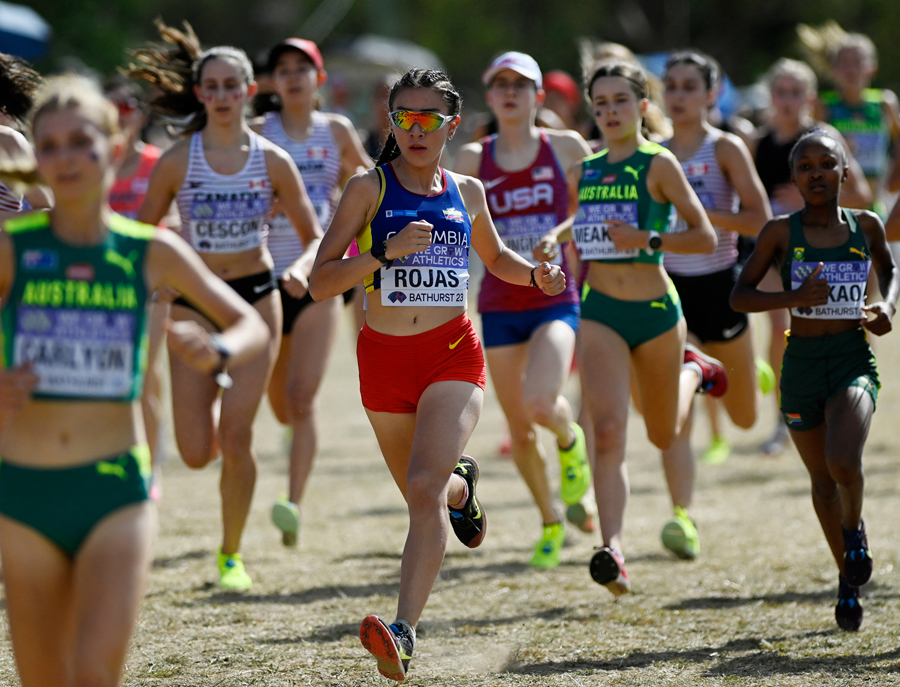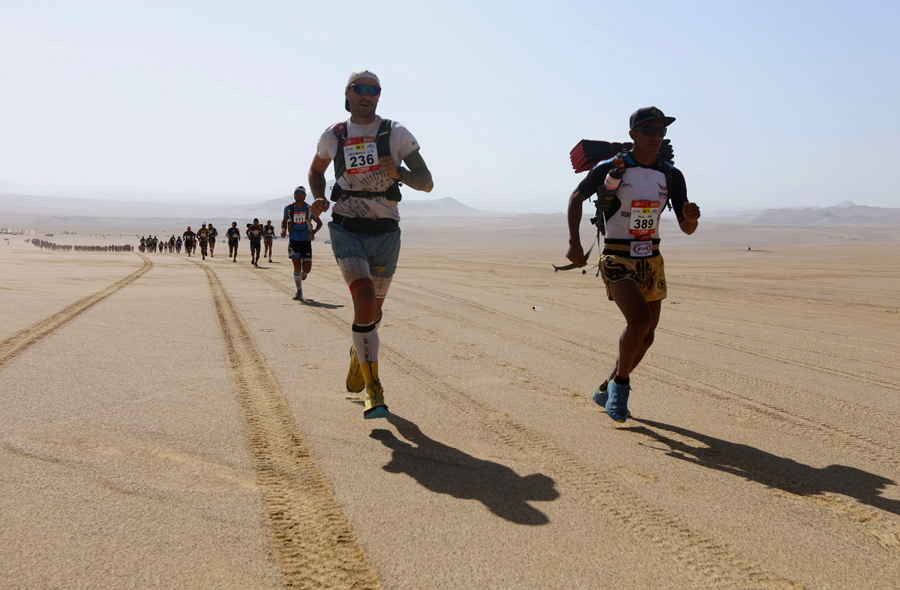Endurance training: the low-intensity paradox:
SPB looks at new research on why high-volume low-intensity training is effective for endurance athletes, despite delivering a relatively low training stimulus
The concept of training intensity is critical for endurance athletes who want to maximize performance gains, and has been the topic of much debate among sport scientists. Once upon a time, a ‘no pain, no gain’ approach was common in athletes, where much of the training was conducted at hard or very hard intensity. In more recent years however, a growing body of evidence from elite athletes has accumulated that for maximum performance gains, there could be a better way. This better way revolves around a concept known as ‘polarized training’(1-3). The polarized approach to training intensity proposes that endurance athletes spend a large proportion of their training time working at low intensity and a small proportion at a very high intensity, with relatively little time spent training at or near to lactate threshold.
The low-intensity focused approach
The theory behind a polarized approach is that it provides an excellent ‘aerobic foundation’ yet allows for high-intensity work that really stimulates training adaptation (ie aerobic fitness gains) without excessive fatigue. Studies show that high- or very high-intensity training is important for athletes to maximize performance(4,5). However, it turns out that when looking at the training diaries of elite athletes who are training with a specific goal in mind, they almost universally prioritize the volume of low-, and not high-, intensity training in their programs. Indeed, when it comes to runners, it is large amounts of low-intensity training volumes compared to high intensity that appears to mark out the best performers (see figure 1)(6). Indeed, elite athletes commonly devote the majority of their training time to the low-intensity zone, with isolated cases that may even exceed 90% of the total volume(7).
Figure 1: Training intensity ratios and marathon finish time

Unanswered paradox
Given we know that elite endurance athletes prioritize most of their training in the low-intensity zone there’s a paradox that needs answering. Simple logic suggests that training this way should be pointless for elite athletes as low-intensity exercise does not challenge the homeostasis or cardiopulmonary system (ie create a training stimulus) in these high-level athletes sufficiently large enough to produce performance gains comparable to those from moderate- or high-intensity exercise. This logic also suggests that these athletes would be better off spending much more time training at high intensities. But the facts don’t lie; the vast majority of elite athletes spend the bulk of their time training in zone 1 and end up on the podium! The question is why? Assuming that modern sports training has evolved over many decades and has been constantly refined and optimized to deliver maximum gains, what is the purpose of zone-1 training, and why do athletes choose to do so much of it?
Looking for answers
Amazingly, the answer to this fundamental question is not really known! Elite/successful athletes perform large volumes of low-intensity training because it works, even if it is unclear why. However, even though we don’t have definitive answers, there are a number of different theories around that might explain this paradox. And while it’s true that these theories arise from research on (mainly) recreational athletes rather than elites, they offer the best insight as to why high-volume, low-intensity training might enhance elite athlete performance.
In a newly published review study from Finland, researchers have gathered together these theories and looked at why/how they might explain this low-intensity paradox(8). Published in the European Journal of Applied Physiology, this study has investigated seven hypotheses that could explain the low-intensity paradox. Each of these hypotheses by itself provides a rationale for high-volume, low-intensity training, but of course, it may well be that more than one, or several, operate in tandem to deliver training benefits. Let’s see what these seven hypotheses are (NB: in the following descriptions, ‘LI’ = low intensity, ‘HI’ = high-intensity, ‘exercise’ = training session).
Hypothesis #1 – Maintenance or slight improvements to performance without accumulating stress
For most elite athletes, complete cardiac recovery from high-intensity training session takes two or more days, which limits athletes to two or three at most weekly high quality HI sessions per week(9). Meanwhile, cardiac recovery from LI exercise takes place within a matter of hours or a day at most(10). Therefore, scheduling in lots of LI work in between HI sessions, is not only possible but desirable, as some research suggests that it may also contribute to the process of performance enhancement, while still allowing recovery from HI sessions(11). In summary, LI training might maintain, or modestly improve, performance while allowing recovery from HI exercise.
Hypothesis #2 - LI training is an alternative method for molecular adaptation signals
At the muscle cell level, some endurance adaptations, such as mitochondrial biogenesis (synthesis of the mitochondria energy factories that power aerobic metabolism), are thought to be triggered by signalling/regulating molecules such as ‘PGC-1α’. PGC-1α is believed to be activated through various means, including free radicals during exercise, changes in hormonal balance, and increased metabolic stress caused by energy deficiency, glucose deficiency, or elevated fatty acid concentrations(12). It might be that both LI and HI exercise activate PGC-1 but through different pathways – in particular that LI exercise activates PGC-1α via fatty acid elevation in the blood during prolonged LI sessions. In other words, LI training might provide an alternative/second adaptation pathway and, in doing so, introduce variability and a ‘two-pronged approach’ into the training adaptation process.
Hypothesis #3 - LI training enables long-term structural remodeling
Long-term cross-sectional studies show that five or more years of consistent endurance training leads to greater physiological adaptations in athletes compared to two years or less(13). These differences include improved oxygen utilization at the muscle cell level and higher maximal oxygen uptake (VO2max) values. An analysis of over 150,000 marathoners found that while weekly absolute medium-intensity and HI training times remained relatively stable regardless of marathon performance, high-level performing runners had by far the greatest LI training time(14). Thus, it is possible that consistent high-volume LI training results in structural adaptations that separate champions from amateurs (although the effects of genetics, and sufficient nutrition and rest cannot be ruled out). The ‘structural hypothesis’ is not a new proposition; some eminent scientists have suggested LI training predisposes athletes to additional adaptations above and beyond those gained from HI exercise(15). The long-term structural changes that might be brought about by LI training include:
· Gradual remodeling of the structure and function of the left ventricle of the heart (a phenomenon observed through the careers of professional cyclists(16). It is also proposed that high-volume LI training gradually helps to stretch the pericardium surrounding the heart, allowing the heart to enlarge (and increase its output) over time.
· High-volume LI training promotes the repeated stretch and shear of blood capillaries, which could play a role in promoting capillary formation over years.
· A slow shift in muscle composition over many years to primarily slow-twitch (endurance) fibers. Supporting this, an increased proportion of slow-twitch fibers has been observed in cross-country skiers after several years of training(17).
· It has been suggested that HI training could improve the efficiency of individual mitochondria to produce energy, while high-volume LI training could be linked to an increase in total mitochondrial mass(18). Thus, HI and LI training may target different aspects of mitochondrial biogenesis.
Hypothesis #4 - LI training affects something that has not yet been measured
Good endurance performance relies on multiple physiological components, including fat oxidation capacity, threshold intensities, oxygen kinetics, movement economy, durability, and VO2max(19). It could be that LI training affects one of these components in a way that is not fully appreciated. For example, a high volume of LI training has recently been associated with good durability (see this article)(20), and a high volume of LI training could be involved in improving the ability to recover more swiftly after an exercise session, and also to maintain metabolic and physiological balance during in exercise(21). In summary, years of dedicated LI training may be involved in improving components of endurance that are not yet fully understood or clearly defined.
Hypothesis #5 - LI training is needed psychologically
In day-to-day terms, LI exercise had been found to improve mood and mental well being in both untrained and trained individuals, while HI exercise decreases it(22). Moreover, in athletes, short-term LI training decreases mental fatigue(23), while a block of HI training increases distress(24) In short, emphasizing too much moderate- or HI training might simply be psychologically too demanding for athletes, leading to staleness and burn out.
Hypothesis #6 - LI training strengthens HI training adaptations
Combining a high total volume of low-intensity physical activity with HI training appears to be more effective than HI training alone in untrained(25) and moderately-trained individuals(26). In other words, when you add LI training to a HI training program, the gains from that HI training are greater than HI alone. Why should this be the case? One hypothesis in this context is that physical activity in the form of LI training within an overall program helps the body ‘not to resist’ the training adaptation process from HI sessions. In effect, LI training might be able to potentiate the training benefits if HI sessions.
Hypothesis #7 - LI training is replaceable
The final hypothesis is that while athletes tend to rely on large volumes of LI training (and it produces good results), there might not be a strict necessity to go down the high-volume of LI route at all. It could be that carefully planned high-intensity training could be an equally feasible training method. Obviously, a concern with this approach is the increased risk of overtraining syndrome and a higher injury rate. However, it might be that with sufficient training dose control and recovery days and weeks, overtraining syndrome could be avoided. Also, a high-volume, LI approach involves more repetitions of limb movements, which also increases the risk of overuse injuries(27). Therefore, we cannot unequivocally state that intensity or volume is a more detrimental stressor for injury. If it turns out that future studies show LI training can be replaced by more intensified training, it would suggest that top-level athletic performance depends not on the large volume of LI training, but rather on a large volume of endurance training, regardless of intensity.
Practical implications for athletes
Unlike an experimental study, this review into the use of high-volume, LI training to promote maximal endurance performance is more philosophical and theoretical in nature. However, these hypotheses are underpinned to various degrees by previous scientific findings, which mean they likely at least partly explain the benefits of LI training. In particular, there’s good evidence for LI training-induced adaptations for molecular signalling in muscle, the long-term structural remodeling (particularly in heart muscle), and the psychological benefits. Some of the other mechanisms discussed may also come into play such as the improvement in durability (albeit the evidence is weaker), and it’s likely that a blend of these factors contribute to the overall benefits.
The key take home message for endurance athletes is that while the LI training paradox is authentic, in real life with real athletes, high-volume LI training works, producing excellent results – providing there is at least some HI training such as interval or race pace sessions. Moreover, as Andrew Sheaff explained in his recent article on the key training principles used by successful coaches of elite athletes, one of the foundational principles was a focus on accumulating volume early in the preparation period. While interval training was present through the training year (although only 2-3 of sessions per week at most), the accumulation of low-intensity work was considered absolutely critical. These then are the principles you should use to underpin your training program. If you are unsure how to go about structuring such a program, this article provides a very good starting point!
References
1. Int J Sports Physiol Perform. 2014 Jan;9(1):93-9
2. Int J Sports Physiol Perform. 2012 Jun;7(2):103-12
3. Front Physiol. 2014 Feb 4;5:33
4. J Sci Med Sport 2019. 22:941–947
5. Eur J Sport Sci 2024. 24:1583–1596
6. Sports Medicine December 2024. 55: 1023–1035
7. Front Sports Act Living 2023. 5:1258585
8. Eur J Appl Physiol. 2025 Jun 27. doi: 10.1007/s00421-025-05843-w
9. Sports Med 2013. 43:1259–1277
10. Med Sci Sports Exerc 2007. 39:1366–1373
11. Medicine & Science in Sports & Exercise 2022. 54(5):p 851-860
12. J Exp Biol 2016. 219:205–213
13. Buzza GL (2018) ‘The effect of short and long term aerobic training on exercise capacity and tissue oxygenation in young and older men and women’. doi.org/10.25907/00500
14. Sports Med 2024. doi.org/10.1007/s40279-024-02137-7
15. Int J Sports Physiol Perform 2025. doi.org/10.1123/ijspp.2024-0303
16. J Am Coll Cardiol 2004. 44:144–149
17. Med Sci Sports Exerc 1992. 24:1040–1047
18. Biochem Biophys Acta 2014. 1840:1266–1275
19. J Physiol 2023. doi.org/10.1113/JP284205
20. Eur J Sport Sci 2023. 23:489–498
21. Issurin VB, Dreshman R (2012) ‘Alternative approach to training for endurance athletes: block periodization’. In: Mujika I (ed) Endurance training—science and practice. Iñigo Mujika S.L.U., Vitoria-Gasteiz, Basque Country
22. J Appl Sport Psychol 2000. 12:69–92
23. Scand J Med Sci Sports 2009 19:433–441
24. J Appl Physiol 2002. 93:947–956
25. Med Sci Sports Exerc 2021. 53:1937–1944
26. J Sports Sci 2012. 30(1–70):563-569
27. Sports 2020. 8:35
Newsletter Sign Up
Testimonials
Dr. Alexandra Fandetti-Robin, Back & Body Chiropractic
Elspeth Cowell MSCh DpodM SRCh HCPC reg
William Hunter, Nuffield Health
Newsletter Sign Up
Coaches Testimonials
Dr. Alexandra Fandetti-Robin, Back & Body Chiropractic
Elspeth Cowell MSCh DpodM SRCh HCPC reg
William Hunter, Nuffield Health
Keep up with latest sports science research and apply it to maximize performance
Today you have the chance to join a group of athletes, and sports coaches/trainers who all have something special in common...
They use the latest research to improve performance for themselves and their clients - both athletes and sports teams - with help from global specialists in the fields of sports science, sports medicine and sports psychology.
They do this by reading Sports Performance Bulletin, an easy-to-digest but serious-minded journal dedicated to high performance sports. SPB offers a wealth of information and insight into the latest research, in an easily-accessible and understood format, along with a wealth of practical recommendations.
*includes 3 coaching manuals
Get Inspired
All the latest techniques and approaches
Sports Performance Bulletin helps dedicated endurance athletes improve their performance. Sense-checking the latest sports science research, and sourcing evidence and case studies to support findings, Sports Performance Bulletin turns proven insights into easily digestible practical advice. Supporting athletes, coaches and professionals who wish to ensure their guidance and programmes are kept right up to date and based on credible science.











